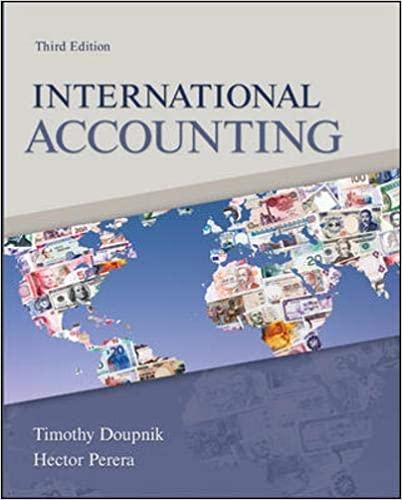Question
1.The PCAOB places responsibility for the reliability of internal controls over the financial reporting process on a.the company's board of directors. b.the audit committee of
1.The PCAOB places responsibility for the reliability of internal controls over the financial reporting process on
a.the company's board of directors.
b.the audit committee of the board of directors.
c.management.
d.the CFO and the independent auditors.
2.Tests of controls
a.are the procedures used to test the effectiveness of controls in support of a reduced assessed control risk.
b.are used to support the ending balances in the balance sheet and income statement accounts.
c.are performed at the end of the audit.
d.are designed to detect fraud.
3.Realizable value is an essential balance-related audit objective for accounts receivable because collectability of receivables is often a significant concern. Which of the following is not an internal control the auditor should evaluate to reduce the likelihood of uncollectible accounts?
a.customer credit approval by appropriate personnel
b.preparation of an aged trial balance reviewed and followed up by appropriate management personnel
c.a written policy of writing off uncollectable receivables
d.All of the above are internal controls the auditor should evaluate.
4.Which of the following would have the least impact in determining sample size?
a.acceptable risk of overreliance
b.risk of assessing control risk too low
c.tolerable exception rate
d.population size
5.The two primary classes of transactions in the sales and collection cycle are
a.sales and sales discounts.
b.sales and cash receipts.
c.sales and sales returns.
d.sales and accounts receivable.
6.If a potential loss on a contingent liability is remote, the liability usually is
a.disclosed in footnotes, but not accrued.
b.neither accrued nor disclosed in footnotes.
c.accrued and indicated in the body of the financial statements.
d.disclosed in the auditor's report but not disclosed on the financial statements.
7.An auditor has the responsibility to actively search for subsequent events that occur subsequent to the
a.balance sheet date.
b.date of the auditor's report.
c.balance sheet date, but prior to the audit report.
d.date of the management representation letter.
8.Which of the following is not an application control?
a.reprocessing authorization of sales transactions
b.reasonableness test for unit selling price of sale
c.post-processing review of sales transactions by the sales department
d.logging in to the company's information systems via a password
9.Which substantive test would be most effective in testing the occurrence of sales transactions:
a.Trace a sample of postings from the sales journal to the sales account in the general ledger.
b.Vouch a sample of recorded sales from the sales journal to service contracts.
c.Test the aging of the receivables balance.
d.Examine a sample of sales transaction in the week before and after year-end.
10.Which of the following audit tests would be regarded as a test of controls?
a.comparison of the inventory pricing to vendors' invoices
b.tests of the signatures on canceled checks to board of directors' authorizations
c.tests of the additions to property, plant, and equipment by physical inspections
d.review of the specific items making up the balance in a given general ledger account
Step by Step Solution
There are 3 Steps involved in it
Step: 1

Get Instant Access to Expert-Tailored Solutions
See step-by-step solutions with expert insights and AI powered tools for academic success
Step: 2

Step: 3

Ace Your Homework with AI
Get the answers you need in no time with our AI-driven, step-by-step assistance
Get Started


